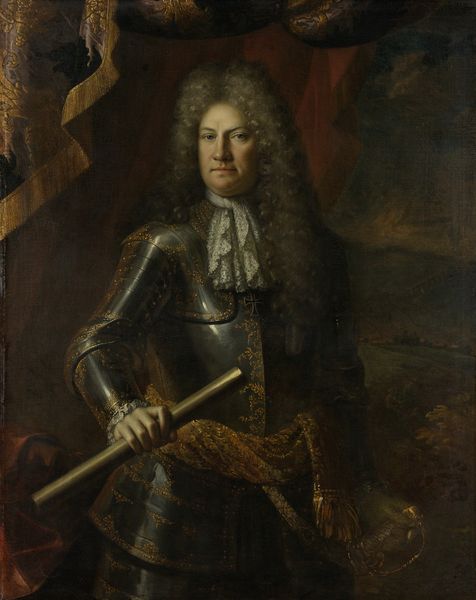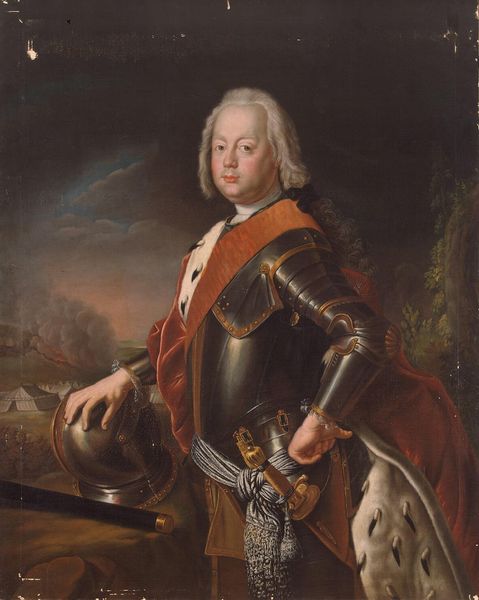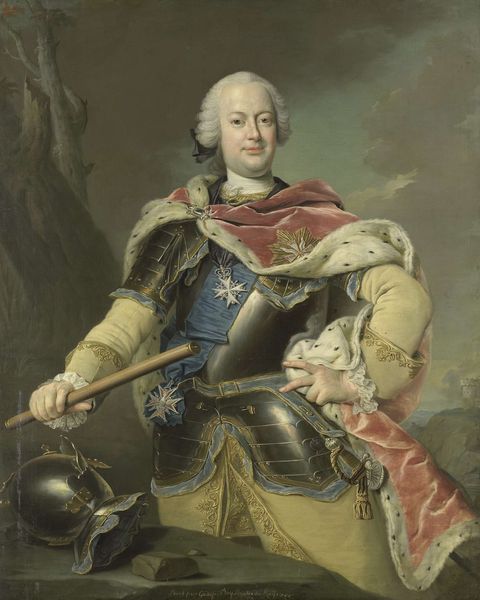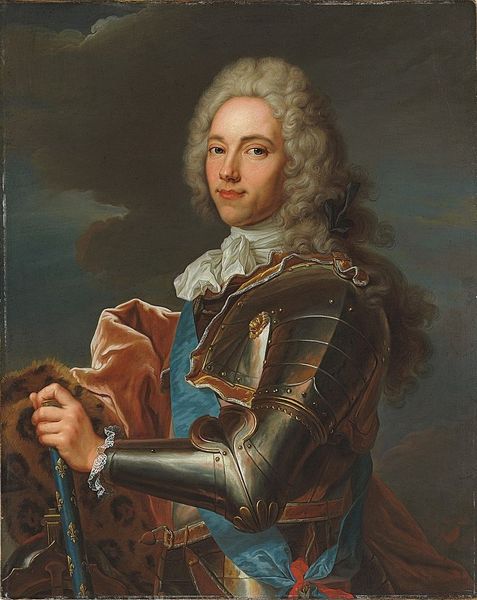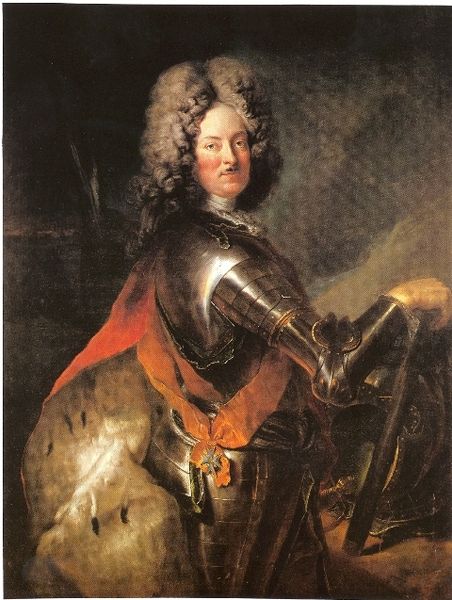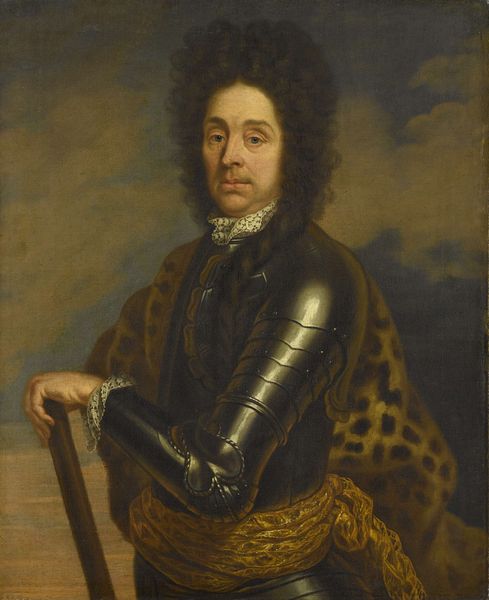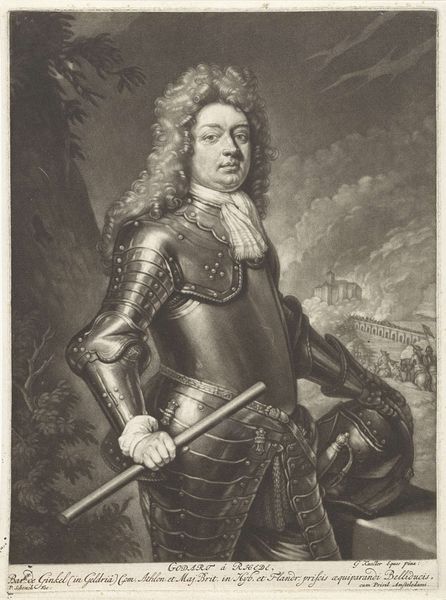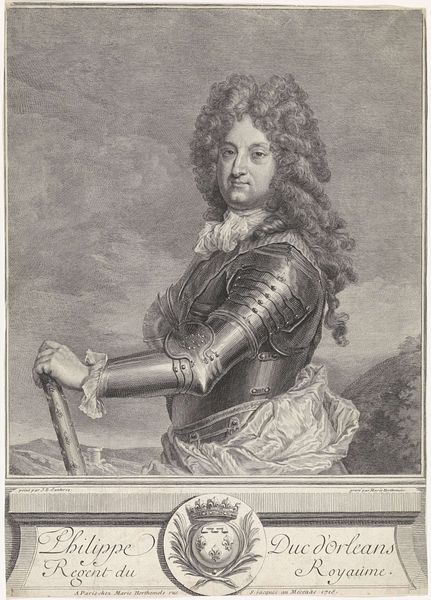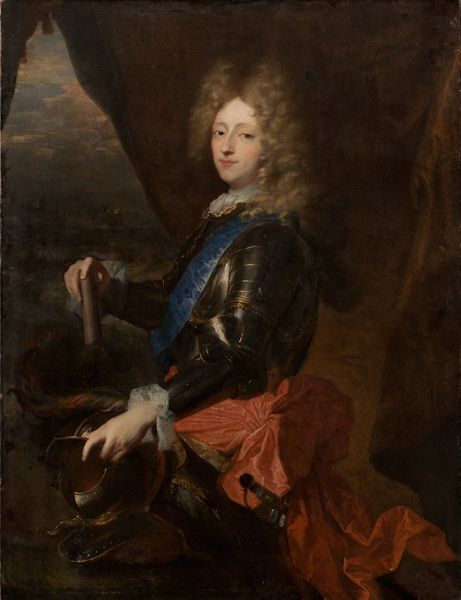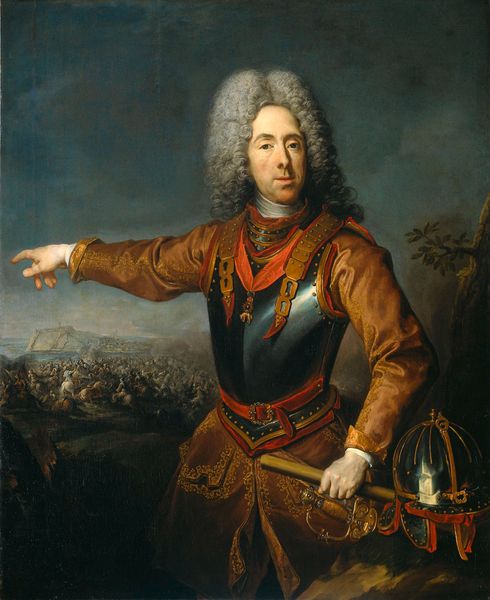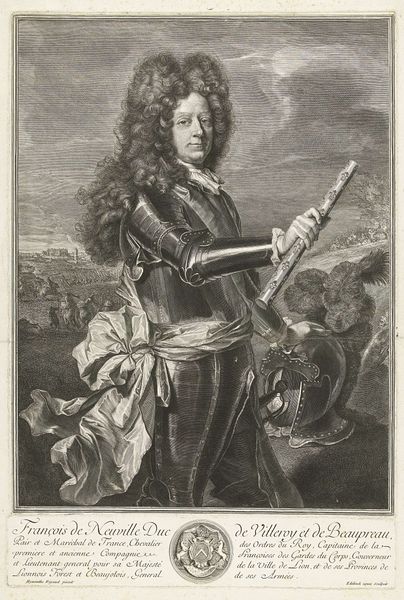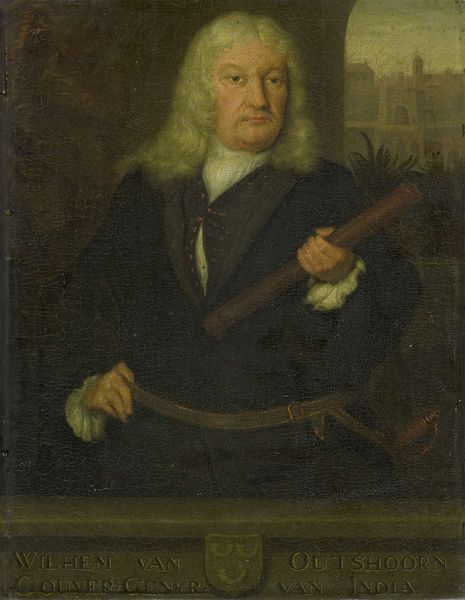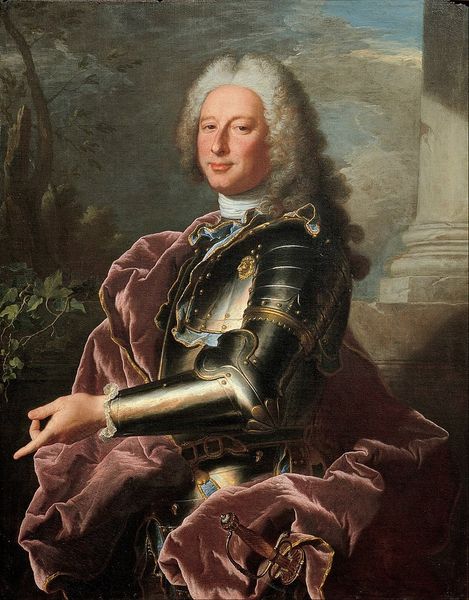
oil-paint
#
portrait
#
baroque
#
oil-paint
#
figuration
#
oil painting
#
history-painting
Copyright: Public domain
Hyacinthe Rigaud, painted this portrait of Louis De France, the Dauphin, likely in the late 17th or early 18th century. The portrait presents the Dauphin in a manner designed to project authority and dynastic power. Note the gleaming armor, the baton of command, and the distant, orderly battle scene that suggests military prowess, all common visual strategies for flattering a monarch. Produced in France, most likely for the court in Versailles, this painting reflects the absolutist ambitions of Louis XIV and his successors. Rigaud’s portraits are closely tied to the cultural institutions of the French monarchy, especially the Académie Royale de Peinture et de Sculpture. The Dauphin appears as a figure of inherited authority and power, perpetuating the traditional role of the monarchy in the French social order. Understanding this painting benefits from delving into the court's records, the artist's biography, and the history of the Académie Royale. Appreciating the artwork's meaning relies on grasping its original social and institutional setting.
Comments
No comments
Be the first to comment and join the conversation on the ultimate creative platform.
